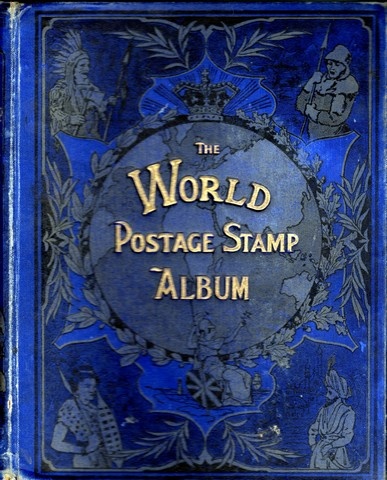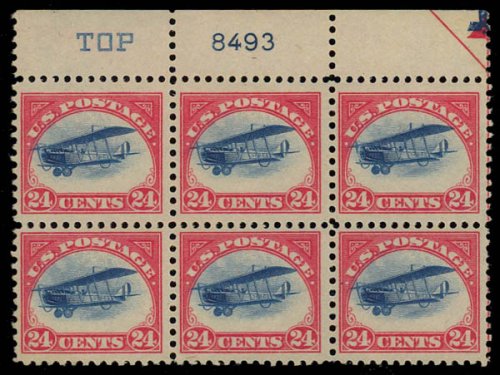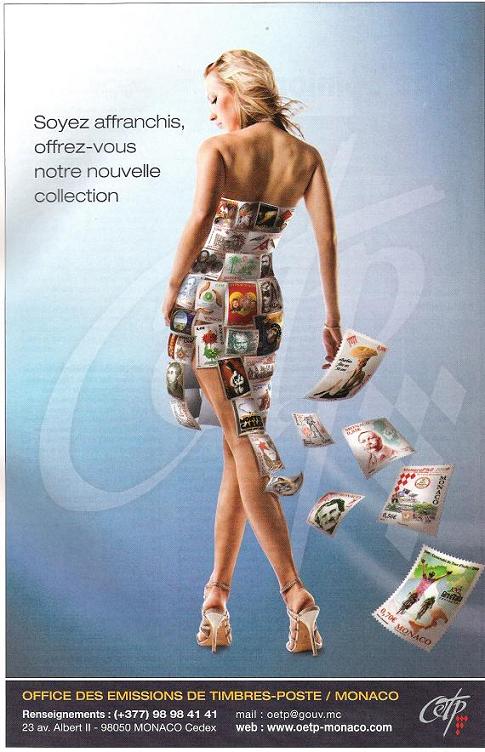 Postally speaking, the United Nations is an invention—an organization, not a nation or political entity. The fact that it issues its own postage stamps and maintains its own postal service is a concession to the trappings of sovereignty (real political entities control their own post) and a revenue grab (UN stamps can be sold to collectors and the United States has the expense of processing and delivering the United Nations Postal Administration's (UNPA) mail). Interest in UN stamps has always been a factor of interest in and respect for the United Nations as an organization, and it is safe to say that interest in UN stamps is at an all time low.
Postally speaking, the United Nations is an invention—an organization, not a nation or political entity. The fact that it issues its own postage stamps and maintains its own postal service is a concession to the trappings of sovereignty (real political entities control their own post) and a revenue grab (UN stamps can be sold to collectors and the United States has the expense of processing and delivering the United Nations Postal Administration's (UNPA) mail). Interest in UN stamps has always been a factor of interest in and respect for the United Nations as an organization, and it is safe to say that interest in UN stamps is at an all time low.Monthly Archives: July 2016
- Posted July 29, 2016Read more »
 Postally speaking, the United Nations is an invention—an organization, not a nation or political entity. The fact that it issues its own postage stamps and maintains its own postal service is a concession to the trappings of sovereignty (real political entities control their own post) and a revenue grab (UN stamps can be sold to collectors and the United States has the expense of processing and delivering the United Nations Postal Administration's (UNPA) mail). Interest in UN stamps has always been a factor of interest in and respect for the United Nations as an organization, and it is safe to say that interest in UN stamps is at an all time low.
Postally speaking, the United Nations is an invention—an organization, not a nation or political entity. The fact that it issues its own postage stamps and maintains its own postal service is a concession to the trappings of sovereignty (real political entities control their own post) and a revenue grab (UN stamps can be sold to collectors and the United States has the expense of processing and delivering the United Nations Postal Administration's (UNPA) mail). Interest in UN stamps has always been a factor of interest in and respect for the United Nations as an organization, and it is safe to say that interest in UN stamps is at an all time low. - Posted July 28, 2016Read more »
 Most collectors put their stamps in stamp albums, and preprinted albums have existed since the very earliest days of our hobby. Scott began producing stamp albums in the United States in the 1860s, copying the first stamp album producers in Europe. The most unusual thing about stamp album producers is how concentrated the business is in just a few hands and how little the stamp album manufacturers have changed over the years.
Most collectors put their stamps in stamp albums, and preprinted albums have existed since the very earliest days of our hobby. Scott began producing stamp albums in the United States in the 1860s, copying the first stamp album producers in Europe. The most unusual thing about stamp album producers is how concentrated the business is in just a few hands and how little the stamp album manufacturers have changed over the years. - Posted July 26, 2016Read more »
 The high point of stamp journalism was in the 1930's. Scores of weekly and monthly philatelic periodicals existed, many of them only a few pages and many of the journals existing for only a few issues. The Great Depression put many people out of work and printing companies had tremendous excess capacity, so there were many people with time to write and publish and printing costs were cheap. WW II put many of the less significant publications out of business as rationing made printing more difficult and the war meant full employment here at home.
The high point of stamp journalism was in the 1930's. Scores of weekly and monthly philatelic periodicals existed, many of them only a few pages and many of the journals existing for only a few issues. The Great Depression put many people out of work and printing companies had tremendous excess capacity, so there were many people with time to write and publish and printing costs were cheap. WW II put many of the less significant publications out of business as rationing made printing more difficult and the war meant full employment here at home. - Posted July 22, 2016Read more »
 Throughout the late nineteenth century Germany was as involved as any European power in the fight to carve up China for political and commercial advantage. The United States, Italy, Japan, Great Britain, and France also issued stamps for their sovereign city states on the Chinese mainland. These city states were land ceded by the Chinese government on long term leases to European governments. These leases were negotiated by the Chinese from a position of political weakness and often were made literally at gun point. Hong Kong which reverted bac
Throughout the late nineteenth century Germany was as involved as any European power in the fight to carve up China for political and commercial advantage. The United States, Italy, Japan, Great Britain, and France also issued stamps for their sovereign city states on the Chinese mainland. These city states were land ceded by the Chinese government on long term leases to European governments. These leases were negotiated by the Chinese from a position of political weakness and often were made literally at gun point. Hong Kong which reverted bac k to China when the lease expired in the 1990s was an example of one of these European imperial ventures
k to China when the lease expired in the 1990s was an example of one of these European imperial ventures - Posted July 21, 2016Read more »
 Turkey today is a country with only moderate influence in areas that most often make headlines in American newspapers. But until World War I Turkey was often an important player in the European theater. Turkey, through Byzantium, later named Constantinople, was at the heart of the Eastern Roman Empire, and though Rome itself was sacked in the fifth century and the western Roman Empire formally ended at that time, the empire in the east continued until the Turkish conquest of Constantinople in the fifteenth century. The Ottomans continued to dominate the politics of Eastern and Southern Europe and nowhere was this more evident than in the Balkan area. The Balkans are a mountainous area in southeastern Europe that have been at the fulcrum of much European turmoil. Because of its geographic location the Balkans have been the path from Asia to Europe and so have been a buffer for both Turks and Europeans wishing to secure their borders. Montenegro is a small and mountainous country along the
Turkey today is a country with only moderate influence in areas that most often make headlines in American newspapers. But until World War I Turkey was often an important player in the European theater. Turkey, through Byzantium, later named Constantinople, was at the heart of the Eastern Roman Empire, and though Rome itself was sacked in the fifth century and the western Roman Empire formally ended at that time, the empire in the east continued until the Turkish conquest of Constantinople in the fifteenth century. The Ottomans continued to dominate the politics of Eastern and Southern Europe and nowhere was this more evident than in the Balkan area. The Balkans are a mountainous area in southeastern Europe that have been at the fulcrum of much European turmoil. Because of its geographic location the Balkans have been the path from Asia to Europe and so have been a buffer for both Turks and Europeans wishing to secure their borders. Montenegro is a small and mountainous country along the - Posted July 19, 2016Read more »
 For over 75 years the United States has issued stamps for Duck Hunting. To go hunting, each year a hunter must purchase a (now $25) Federal Duck hunting stamp and usually a state duck hunting stamp as well. The proceeds from the sale of the stamps are a user tax, going back to wetlands and duck management programs. The Federal Duck Stamp program is one of the oldest user fees that the government has imposed. Duck stamps have long been very popular
For over 75 years the United States has issued stamps for Duck Hunting. To go hunting, each year a hunter must purchase a (now $25) Federal Duck hunting stamp and usually a state duck hunting stamp as well. The proceeds from the sale of the stamps are a user tax, going back to wetlands and duck management programs. The Federal Duck Stamp program is one of the oldest user fees that the government has imposed. Duck stamps have long been very popular - Posted July 18, 2016Read more »

 Wars require the movement of troops and material, and this requires communication, which means mail. The hundreds of thousands of Americans who were sent to fight and die in France at the end of World War I were sent with two postal issues all of their own. Soldiers like booklet stamps as they can be carried in backpacks. The cardboard covers keep the stamps somewhat safe from damage, and such booklets are easier to store for when they are needed. And WW I was the war of the trenches. Between the senseless running toward machine guns for a few feet of gain which were called battles in that war were long periods of inactivity in the trenches. There is just so much time you can devote to playing cards, and these men had lots of time to write home. Ordinary booklets were used up too quickly, so the Post Office created booklets of thirty stamps of the one cent and the two cent values just for the soldiers of the American Expeditionary Force in France.
Wars require the movement of troops and material, and this requires communication, which means mail. The hundreds of thousands of Americans who were sent to fight and die in France at the end of World War I were sent with two postal issues all of their own. Soldiers like booklet stamps as they can be carried in backpacks. The cardboard covers keep the stamps somewhat safe from damage, and such booklets are easier to store for when they are needed. And WW I was the war of the trenches. Between the senseless running toward machine guns for a few feet of gain which were called battles in that war were long periods of inactivity in the trenches. There is just so much time you can devote to playing cards, and these men had lots of time to write home. Ordinary booklets were used up too quickly, so the Post Office created booklets of thirty stamps of the one cent and the two cent values just for the soldiers of the American Expeditionary Force in France. - Posted July 15, 2016Read more »
 Now is the time to begin your specialized collection of Olympic stamps. The popularity of this thematic flows in quadrennial cycles, usually peaking a few months before the games themselves. Olympic philately is one of the most interesting and long established of the topical philatelic areas with the first set being issued by Greece for the first modern Olympic Games in 1896. After that, every four years many countries issued Olympic stamps.Here are a few tips for maximizing the profit potential of your Olympic collection and minimizing the risk of loss. First, stick with the straight stamps. Olympic
Now is the time to begin your specialized collection of Olympic stamps. The popularity of this thematic flows in quadrennial cycles, usually peaking a few months before the games themselves. Olympic philately is one of the most interesting and long established of the topical philatelic areas with the first set being issued by Greece for the first modern Olympic Games in 1896. After that, every four years many countries issued Olympic stamps.Here are a few tips for maximizing the profit potential of your Olympic collection and minimizing the risk of loss. First, stick with the straight stamps. Olympic - Posted July 14, 2016Read more »
 Every country has sub specialties that are avidly collected by internal collectors, but which foreign specialist collectors of those countries never really warm too. As an auctioneer you can see this in bidding patterns and where certain stamps eventually sell to. Ordinary Great Britain stamps in our auctions sell to Americans, Canadians, Britons and Europeans. Plate numbers and cancellations of GB are similarly collected worldwide. But specialized phosphors or graphite lines on QE II and Machins always seem to go back to Great Britain. France has a world following, but the precancels, which are so popular in France itself, are relatively uncollected elsewhere. And the Germans? Well no one else enjoys counting perforation holes or measuring paper thickness or booklet combinations the way they do.
Every country has sub specialties that are avidly collected by internal collectors, but which foreign specialist collectors of those countries never really warm too. As an auctioneer you can see this in bidding patterns and where certain stamps eventually sell to. Ordinary Great Britain stamps in our auctions sell to Americans, Canadians, Britons and Europeans. Plate numbers and cancellations of GB are similarly collected worldwide. But specialized phosphors or graphite lines on QE II and Machins always seem to go back to Great Britain. France has a world following, but the precancels, which are so popular in France itself, are relatively uncollected elsewhere. And the Germans? Well no one else enjoys counting perforation holes or measuring paper thickness or booklet combinations the way they do. - Posted July 12, 2016Read more »
 For stamp dealers coming of age in the 1960s the stamp world was replete with Europeans who had escaped from Hitler and Stalin. Most were Jews, though looking back through the less opaque lens of our time, I know several were political escapees and at least one was fortunate enough to get out or he would have worn a pink star before he was exterminated. In 1965, the average philatelic refugee was about fifty, so in the prime of his professional life. And there were scores of them on the American philatelic scene.
For stamp dealers coming of age in the 1960s the stamp world was replete with Europeans who had escaped from Hitler and Stalin. Most were Jews, though looking back through the less opaque lens of our time, I know several were political escapees and at least one was fortunate enough to get out or he would have worn a pink star before he was exterminated. In 1965, the average philatelic refugee was about fifty, so in the prime of his professional life. And there were scores of them on the American philatelic scene. - Posted July 11, 2016Read more »
 The three great scourges of humanity have histor
The three great scourges of humanity have histor ically been war, famine, and pestilence. Modern technology though seems to have solved the problems of the devastation of two of these. In the last two centuries over 100 million people have died
ically been war, famine, and pestilence. Modern technology though seems to have solved the problems of the devastation of two of these. In the last two centuries over 100 million people have died - Posted July 07, 2016Read more »
The growth of Asian philately has undermined traditional thinking about where new collectors come from. The traditional model has been the evolutionary model - children (usually boys) introduced to the hobby and collecting in their youth become re enamored with stamps in middle to old age. This paradigm has described the traditional collecting arc in the United States and Europe and has caused considerable chagrin among philatelists about the future of our hobby when we see so few young collectors. The Asian model is quite different - few Chinese collected as children. Rather, as young adults and middle aged men they have come into the hobby in droves. The reasons for this might provide us with a way to promote philately to more mature people today.

- Posted July 01, 2016Read more »
Let's suppose most people had too much money and needed so badly to lose some of it that they offered courses in how to lose it. I can't speak of what they would teach when the course concerned non philatelic areas, but when the subject came to stamp collecting there is no doubt that the best way to lose money is to buy new issues. It's a method that is tried constantly by thousands of collectors and proves itself a winner (that is loser) every time.
Take a country-say the United States- and buy every stamp as a new is


